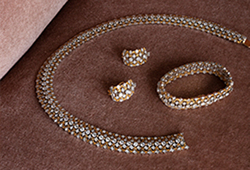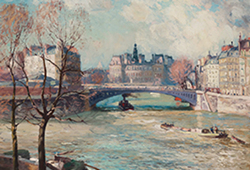Skedar, ett par, porslin. Qingdynastin, sekelskifte 1900.
Med s.k. Dayazhaimark, dekor i grisaille färger av blommor samt med text och märke i rött. Frånsidan i famille rosefärger samt med fyra tecken. Längd 17 cm.
Slitage.
Proveniens
From the Collection of Gustaf Wallenberg (1863-1939). Gustaf Wallenberg was a Swedish business man, diplomat and active politician. He was the son of André Oscar Wallenberg, founder of Stockholm Enskilda Bank (today SEB, and grandfather of Raoul Wallenberg (1912-47?). After a career in the Swedish Navy he turned to the business world and was very active in striving to better the transoceanic shipping industry. Something that came in handy when he in 1908 successfully negotiated with the Qing court in Beijing about a friendship, trade and navigation treaty. The collection was acquired between 1906 and 1918 when Wallenberg was the Swedish Envoyé in Tokyo. From 1907 he was also accredited for Beijing and came to spend time in both countries as the Swedish Ambassador. Mr Wallenberg came to be in China in dramatic part of its history, when a lot of items came on the market and when the golden era of collecting Chinese works of art started in Europe. Thence by descent.
Utställningar
Inscribed with three characters 大雅齋 (Daya Zhai ‘Studio of Great Elegance’) and 天地一家春 (tian di yi jia chun ‘Spring throughout heaven and earth - one family’) within a seal in iron red. The four-character mark on the base reads 永慶長春 (Yongqing changchun ‘eternal prosperity and enduring spring’) in iron-red enamel. The Empress Dowager, Cixi, was the mother of the Tongzhi Emperor and the power behind the throne from 1861 until her death in 1908. This porcelain pattern is believed to have been designed by her and made in Jingdezhen. The Daya Zhai is the hall with in the Forbidden City where Cixi lived.
Litteratur
Scott 1991 / Illustrated Catalogue of Qing Enamelled Ware in the Percival David Foundation of Chinese Art (p.57, no.A838)
Lady David 1973 / Illustrated Catalogue of Ch'ing Enamelled Ware in the Percival David Foundation of Chinese Art (p.38, no.A838)
Wilson 1998 / Rare Marks on Chinese Ceramics (pp 40-41, no.10)
Pierson 2002 / Percival David Foundation of Chinese Art: A Guide to the Collection (p.98, no.111)
Övrig information
The black and white images are from Temple Court, the Wallenberg residence in Japan.


































